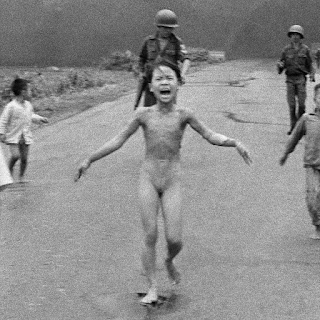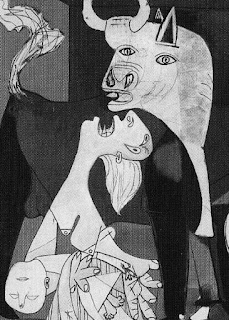Rachel
Weeping Orthodox Icon,
ArchangelsBooks.com
When Herod saw that he had
been tricked by the wise men,* he was infuriated, and he sent and killed all
the children in and around Bethlehem who were two years old or under, according
to the time that he had learned from the wise men. Then was fulfilled what had
been spoken through the prophet Jeremiah:‘A voice was heard in Ramah, wailing and loud lamentation, Rachel weeping for her children; she refused to be consoled, because they are no more.’
Today is the fourth day of Christmas. It is also the Feast of the Holy Innocents. It is a bit odd to call this commemoration a feast day. This day on the church calendar celebrates a legendary infanticide in first century Judea.
This event, reported only in Matthew’s Gospel, occurs when the Magi fail to return to Herod with the whereabouts of the infant Jesus after showering him with symbolic gifts. The power crazed and paranoid Judean king, who served as vassal to Roman occupiers he was intent on impressing, then orders the slaughter of all of Judea’s newborns to eliminate the baby he believed to be a threat to his reign.
Fortunately, Jesus’ parents were warned by an angel of the impending infanticide and fled into asylum in Egypt. From Matthew’s perspective, Jesus, the refugee, survived to change our world’s history only because of the generosity of those who granted him and his family asylum.
There’s little evidence to suggest that this is a historical event. Jewish historian Josephus does not mention the event in his history of the era and only one of the gospels reports it. The writer of Matthew appears to be creating a literary device to construct Jesus as the legitimate heir of David in contrast to the questionable legitimacy of the hated Herod.
This was a common practice among all the Gospel writers, none of whom likely ever actually met Jesus (bearing in mind that the first gospel, Mark, does not come to even an initial form until about 70 CE, a good 40 years after Jesus’ execution). Not having witnessed the events they described, these writers dipped deeply into the ink wells of Hebrew Scripture, history and legend to craft narratives about the figure at the center of their developing faith tradition using the primary resources of Jesus’ own Judaic faith.
Clearly, Herod was known to be ruthless, killing off his own family members to retain his throne. And mass executions by the occupying Romans were common. However, the importance of this story is less as a historical event than as an archetype.
Phan Thi Kim Phuc, "Napalm
Girl," AP photographer Nik Ut (1973)
A Long History of Innocent Blood
Innocents are massacred in human history with regularity and that practice continues to this day. American soldiers in Vietnam destroyed villages populated largely by women, children and the elderly to “save them.” The celebrated “fall of Communism” was quickly followed by the ethnic cleansing of the new states of the former Yugoslavia once the coercive hand of its brutal leadership was lifted.
Refugees from the obscenities that continue to fester in our world flood out of war torn areas to any place they can find to offer even temporary havens. Last year alone a million refugees poured into Europe fleeing the atrocities of a Middle East where fundamentalists bearing the latest American and European weaponry and claiming the imprimatur of the world’s second largest religion have created a true hell on earth in the failed states of Iraq and Syria.
Meanwhile, in our own country, which is largely responsible for the conditions which have given rise to the floods of refugees from both the Middle East and the failing states of Mexico and Central America to our south, demagogic political and religious leaders exploit public fears in refusing to provide them refuge. They readily paint the victims of the savagery US policy has played a large role in creating with the same broad stroke as the fundamentalists of ISIS and the narcotraficantes and gangs of Latin America who have victimized them, forcing them to flee for their lives.
This fear-driven heartlessness is often rationalized by pointing to the handfuls of recruits to the fundamentalist cause hatched out of the detritus of a faltering modernist west which prides itself on being a Panglossian best of all possible worlds. Many of us in the west cannot comprehend how anyone would find our largely superficial consumerist culture with its atomistic, alienated individuals unappealing. And we fail to see the irony that recruiting by ISIS and its kin is energized by the reports of the tactics western powers have used to terrorize the very places from which refugees now flee - sadistic torture in prisons during occupation and drone attacks on civilian sites after departing - all in the name of self-defense.
Pablo Picasso, Guernica (1937)
Rachel Weeps for
GuernicaIn the college classes I once taught on the 20th CE Humanities, a major concept we considered was the use of the arts to protest the horrors of the world wars. We would discuss the literature of Wiesel’s Night, the poetry of Randall Jarrell’s “The Death of the Ball Turret Gunner” and Imamura’s 1989 black and white film about the aftermath of Hiroshima, Black Rain. But chief among the arts of that era which required humanity to look at the obscenities of war was Pablo Picasso’s Guernica.
Picasso was a master of both form and content. His use of the sharp, angular shapes of analytic cubism readily conveyed the harsh reality of the bombed out city in Spain which had no way of knowing what was coming. The use of colors – greys, blacks, whites – permit no softening of the reality at hand. But it is the imagery of the broken statues, the fires, the screaming victims that truly conveys the reality of this test drive of Luftwaffe technology using innocents as guinea pigs approved by Spain’s fascist leader Franco.
Perhaps the most poignant aspect of the painting is the mother holding her dead child screaming her anguished protests of this obscenity to the heavens. I always had my students analyze the painting for its form, medium and content as well as trying to tease out the context and subtext of the painting. Then we would look specifically at the Madonna of Death, the mother and her dead child.
“What do you think she’s saying?” I would ask them.
When they had given me their answers, I showed them my next slide. On it I isolated the image of the Madonna of Death and placed the language from Matthew’s Gospel quoting the prophet Jeremiah next to it: “‘A voice was heard in Ramah, wailing and loud lamentation, Rachel weeping for her children; she refused to be consoled, because they are no more.”
Reuters photo, Hindustan Times, Sept.
3, 2015
http://www.hindustantimes.com/world/drowned-syrian-kid-s-father-wants-to-be-buried-with-him/story-mOHnYxt9iN8cPtJSlOxk9K.html
Rachel’s children continue to be slaughtered in our own time. Some are the victims of short-sighted US foreign policy decisions whose blowback comes home to roost with names like Al Qaida and ISIS. Others are victims of indifference, refugee children who drowned when their frail boats collapsed, their bodies washing up on the shores of the foreign lands where they, like Jesus, sought asylum. Some die in the sweltering cargo holds of commercial trucks smuggling them across borders into the land that made continuing to live in their homelands untenable. Yet others are victims of fear, ignorance and hatred, often couched in appeals to religion and jingoistic nationalism which seek to rationalize bullied children, burned out mosques, the firing of hijab wearing professors and the routine detention of bearded Muslim men at airport check points.
The color appointed for the liturgical celebrations of the Feast of the Holy Innocents is purple. That is the color associated with mourning and repentance, often used during Lent. The slaughter of the innocents - as well as those fellow human beings we deem for whatever reason not to be innocent - inevitably raises the age old question of what it means to be human. Regardless of the answer we conceive, their deaths diminish not only their own families and lands; they render those who have caused their harm and are indifferent to their suffering less than human. Whether or not we are willing to acknowledge it, that is always a cause for mourning and repentance.
Holy One from whom all being comes and to whom all being returns, we remember today the slaughter of the holy innocents of Bethlehem by King Herod. Receive, we pray, into your compassionate arms all victims of violence, war, torture and genocide. Embolden us and all peoples with your Spirit this day to frustrate the designs of evil tyrants that your kingdom of justice, love, and peace may indeed come on Earth as in heaven. Amen.
(Collect, Feast Day of the Holy Innocents, adapted)
+++++++++++++++++++++++++++++++++++++++++++++++++++++
Harry Scott Coverston
Orlando, Florida
frharry@cfl.rr.com
harry.coverston@knights.ucf.edu
If the unexamined life is not worth living, surely an unexamined belief system, be it religious or political, is not worth holding.
Most things worth considering do not come in sound bites.
For what does G-d require of you but to do justice, and to love kindness, and to walk humbly with your G-d? (Micah 6:8, Hebrew Scriptures)
++++++++++++++++++++++++++++++++++++++++++++++++++++++






